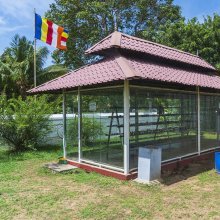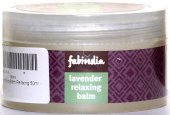Coconut, Cocoanut: 3 definitions
Introduction:
Coconut means something in Hinduism, Sanskrit, biology. If you want to know the exact meaning, history, etymology or English translation of this term then check out the descriptions on this page. Add your comment or reference to a book if you want to contribute to this summary article.
Images (photo gallery)
In Hinduism
Natyashastra (theatrics and dramaturgy)
Source: Shodhganga: Elements of Art and Architecture in the Trtiyakhanda of the Visnudharmottarapurana (natya)Coconuts are associated with Kāṅgūla-hasta: one of the twenty-two Single-hand Gestures (in Indian Dramas) (known as asaṃyuktahastas), according to the Viṣṇudharmottarapurāṇa, an ancient Sanskrit text which (being encyclopedic in nature) deals with a variety of cultural topics such as arts, architecture, music, grammar and astronomy.—In kāṅgūlahasta, the middle finger is set between the forefinger and thumb while the ring finger is bent and the little finger is quite upward. According to the Viṣṇudharmottarapurāṇa, the kāṅgūla posture is used to denote fruits. In the Abhinayadarpaṇa, this posture is said to indicate things as fruits, bell, birds like cakora and cātaka, coconut etc.

Natyashastra (नाट्यशास्त्र, nāṭyaśāstra) refers to both the ancient Indian tradition (shastra) of performing arts, (natya—theatrics, drama, dance, music), as well as the name of a Sanskrit work dealing with these subjects. It also teaches the rules for composing Dramatic plays (nataka), construction and performance of Theater, and Poetic works (kavya).
Ayurveda (science of life)
Agriculture (Krishi) and Vrikshayurveda (study of Plant life)
Source: Shodhganga: Drumavichitrikarnam—Plant mutagenesis in ancient IndiaThe Coconut (in Sanskrit: Tālaphala) is used in certain bio-organical recipes for plant mutagenesis, according to the Vṛkṣāyurveda by Sūrapāla (1000 CE): an encyclopedic work dealing with the study of trees and the principles of ancient Indian agriculture.—Accordingly, “Punica granatum transplanted seven times bears fruits as big as coconut (tālaphala) if nourished with water containing Emblica officinalis, Terminalia bellirica and Terminalia chebula, melted butter, and marrow of a hog”.

Āyurveda (आयुर्वेद, ayurveda) is a branch of Indian science dealing with medicine, herbalism, taxology, anatomy, surgery, alchemy and related topics. Traditional practice of Āyurveda in ancient India dates back to at least the first millenium BC. Literature is commonly written in Sanskrit using various poetic metres.
Biology (plants and animals)
Source: Google Books: CRC World Dictionary (Regional names)Coconut in English is the name of a plant defined with Cocos nucifera in various botanical sources. This page contains potential references in Ayurveda, modern medicine, and other folk traditions or local practices It has the synonym Cocos nana Griff. (among others).
Example references for further research on medicinal uses or toxicity (see latin names for full list):
· The Gardeners Dictionary
· Palma (1768)
· Diss. de Sagu (1757)
· International Journal of Dermatology (2007)
· Ann. Allergy Asthma Immunol. (2007)
· Botanica Acta (1997)
If you are looking for specific details regarding Coconut, for example chemical composition, diet and recipes, pregnancy safety, side effects, health benefits, extract dosage, have a look at these references.

This sections includes definitions from the five kingdoms of living things: Animals, Plants, Fungi, Protists and Monera. It will include both the official binomial nomenclature (scientific names usually in Latin) as well as regional spellings and variants.
See also (Relevant definitions)
Starts with: Coconut juice, Coconut palm, Coconut water.
Ends with: Double coconut, Foul coconut, Sea coconut, The wild coconut, Water coconut.
Full-text (+947): Narikela, Nalikera, Shriphala, Karanka, Khanodaka, Nadikela, Naralakankadem, Narali, Shirahphala, Hajarimada, Rasaphala, Narikera, Naralamada, Dombem, Kuhitakhobarem, Narati, Telaphala, Phalakesara, Madhuphala, Sutunga.
Relevant text
Search found 102 books and stories containing Coconut, Cocoanut; (plurals include: Coconuts, Cocoanuts). You can also click to the full overview containing English textual excerpts. Below are direct links for the most relevant articles:
Parables of Rama (by Swami Rama Tirtha)
Story 22 - Attachment versus Detachment < [Chapter IV - God-consciousness]
Rasa Jala Nidhi, vol 4: Iatrochemistry (by Bhudeb Mookerjee)
Treatment for fever (101): Ghora-nrisimgha rasa < [Chapter II - Fever (jvara)]
Treatment for fever (100): Suchika-bharana rasa < [Chapter II - Fever (jvara)]
Treatment for fever (99): Suchika-ksepana rasa < [Chapter II - Fever (jvara)]
Village Folk-tales of Ceylon (Sri Lanka), vol. 1-3 (by Henry Parker)
Story 30 - The Jackal And The Hare < [Part I - Stories told by the Cultivating Caste and Vaeddas]
Story 33 - The Gamarala’s Cakes < [Part I - Stories told by the Cultivating Caste and Vaeddas]
Story 53 - The Pots Of Oil < [Part II (b) - Stories of the Tom-tom Beaters]
Manusmriti with the Commentary of Medhatithi (by Ganganatha Jha)
Verse 11.94 < [Section VIII - Expiation of drinking Wine (surā)]
Verse 3.266 < [Section XXI - Relative Merits of the Offering-Materials]
Yoga Vasistha [English], Volume 1-4 (by Vihari-Lala Mitra)
Chapter CXXIII - The king's excursions on all sides < [Book VII - Nirvana prakarana part 2 (nirvana prakarana)]
Chapter CIX - Fighting with the invading armies at the gate of the city < [Book VII - Nirvana prakarana part 2 (nirvana prakarana)]
Chapter CXII - Flight of the foreign foes < [Book VII - Nirvana prakarana part 2 (nirvana prakarana)]
Chaitanya's Life and Teachings (by Krishna-das Kaviraj)
Related products
(+61 more products available)









